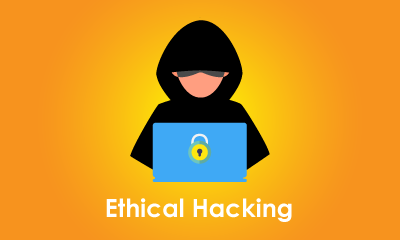- Home
- Blog
- Cyber Security
- Cyber Security Threats and Prevention Methods

- Cyber Security Career Path
- Cyber Security Certifications
- Cyber Security Frameworks
- Cyber Security Interview Questions
- Top 10 Cyber Security Tools In 2024
- How to Become a Cyber Security Engineer
- Reasons to Learn Cyber Security
- Cyber Security Best Practices
- What is Cyber Security?
- New Technology Trends in 2024
- Spoofing vs Phishing
- Penetration Testing Interview Questions
- Network Security vs Cyber Security
- What is Penetration Testing?
- Bug Bounty Interview Questions
- CRISC VS CISA
- Cyber Security VS Data Science
- Cybersecurity Projects and Use Cases
Types of cyber security threats and prevention methods
In today’s article, we will discuss cyber security threats and the importance of cyber security policies within an organization.
So what is Cyber Security Threat?
A threat is a threat which endangers a system or a practice. In the cyber security world, a threat refers to a process where it causes vital damage to the computer systems. It can be classified as an activity that might happen or might not happen but it has enough potential to cause considerable damage.
These threats can be exposed to a single computer system or a network of systems.
Is cyber security threat is really harmful?
Well, it depends upon the activity and the computer system it is affected. This is also classified as a type of cyber security threat that is experienced.
Trojan:
It is one of the most complicated threats when compared to others. On an analysis and observation, most of the banking threats come from Trojan family itself. They are able to hide from antivirus software and their primary purpose is to steal vital banking information which ultimately compromises your bank account and transactions.
Virus:
I am sure most of them are aware of this term, it is one of the popular cyber security threat to the computer systems. It is a piece of code or program which replicates itself and once it is hosted on the computer system it will cause damage to the entire system. Most of the time it is used for monetizing individuals. Hackers inject the virus in different forms and once the systems are affected with the virus only the hackers will be able to allow access to the system again. In order to clear the virus, they demand money from the users.
For example Ransomware , it has destructed hundreds of individuals and companies.
Worms:
It is considered to be one of the harmless threat to the computer system. But it replicates itself and has a chance of spreading from one computer to another computer within the network systems. Further, it will eat up the entire hard disk space as it replicates itself.
Spyware:
It is kind of a Malware, once the system is affected by this then the user activity or certain activity of the user on the computer system can be spied. Based on your activity, the hacker will scam you based on your interest. For example: if you have constantly browsed Xbox products then the hacker will come up with a very convincing scam on Xbox and finally cheat you.
Scareware:
It is one the tricky threat to the general users. Usually, once these scareware's find their way to the computer system and once they are installed, it will immediately alert the user that and show information that your system is actually infected with the number of viruses and prompt you to buy anti-malware and antivirus software which are bogus most of the time.
Keylogger:
This is one of the powerful threat where most of the information is tracked. So based on your keystrokes, keylogger will be able to keep a track of your activity. With the help of this program, the hacker will be able to find out your personal information like username and password.
Adware:
This is not a harmful threat but it is one of the annoying factors once you are affected. Once this is installed, your computer will pop up a lot of ads ( shows both non-adult material and adult material).
Phishing:
It is a fake website where the common users will be able to enter their username and password within the login form and these details are not actually verified across the server but these details are actually captured within the attacker controlled server. Thus it helps in storing all the vital information from the users.
Bluesnarfing:
Bluesnarfing is a process of obtaining unauthorized access to specific mobile phones, laptops or PDA via Bluetooth connection. Once such connection is established then the attacker will be able to steal photos, messages and contacts etc.
DDoS:
DDoS stands for Distributed Denial of Service.
With this process, the attacker will divert a traffic to a certain website and causes the server to collapse. During this time, it will be helpful for the attacker to obtain certain sensitive data. This kind of trick is generally popular.
Browser Hijackers:
This can be considered to be a vital threat to the computer users. Using this trick, the attacker will be able to control the user Browser session and will be able to manipulate their actions. This is extremely dangerous when the user is trying to do an online transaction, the hijacker will be able to take control on this and has an ability to change the account transfer destination and the account details.
Virus Document:
A few years ago we were asked not to install any EXE files from the internet if you are not sure of. Because within the installation of an unknown EXE file will also enable doors for a lot of virus installations without the user notice. The same way nowadays with the help of technology, hackers are able to send virus or malware with documents, such as PDF’s etc.
SQL Injection:
With SQL injection it will not harm the end user but it will cause unauthorized access to the database and the hijacker will be able to gain access to all the vital information that is stored in the database.
Checkout Cyber Security Interview Questions
So we have different types of cyber security threats that we have gone through but all of these threats can be prevented and has any real time solutions?
Yes, all of these threats can be mitigated by following certain rules and regulations and maintaining security standards.
1. Inculcate a habit of not using passwords but start using passphrases. This will secure the authentication and helps you stay safe.
2. Activate Windows firewalls so that the security barrier is raised to next level.
3. Invest in good Antivirus and Anti-Malware software
4. Stop installing cracked software, if not then it will open doors for a lot of spyware installation.
5. If you are using online storage spaces like, Google Drive, Dropbox then please make sure you encrypt your data by using online encrypted services. This way if these big companies have face any data breach you don't have to worry about your data loss.
6. Secure your Wifi networks with secure passphrase rather than a password and make sure the network is WPA2 encryption.
7. Make sure your social media settings are appropriate.
8. Secure your mobile phone's, always make a habit to download apps from Google Play Store or Apple Store.
9. Please do not store your credit card or debit card details on websites.
10. If you got hacked, please do not panic, please consult an appropriate ethical hacker or help from your IT team.
11. Never Trust emails, a lot of fake emails are sent out by hackers that you have won x number of dollars. In reality, they use your personal information and try to hack into your bank accounts and steal your hard earned money.
Conclusion:
So as the technology advancement has been observed we have also experienced a huge amount of cyber security threats that are exposed to a single individual and at the same time organizations are also affected. So one has to make sure that they understand that their personal information is vital and at any cost, it shouldn’t be compromised. The individuals should be educated and trained to use at least minimum security standards in their daily chorus.
 On-Job Support Service
On-Job Support Service
Online Work Support for your on-job roles.

Our work-support plans provide precise options as per your project tasks. Whether you are a newbie or an experienced professional seeking assistance in completing project tasks, we are here with the following plans to meet your custom needs:
- Pay Per Hour
- Pay Per Week
- Monthly
| Name | Dates | |
|---|---|---|
| Cyber Security Training | Jan 24 to Feb 08 | View Details |
| Cyber Security Training | Jan 27 to Feb 11 | View Details |
| Cyber Security Training | Jan 31 to Feb 15 | View Details |
| Cyber Security Training | Feb 03 to Feb 18 | View Details |

Sandeep is working as a Senior Content Contributor for Mindmajix, one of the world’s leading online learning platforms. With over 5 years of experience in the technology industry, he holds expertise in writing articles on various technologies including AEM, Oracle SOA, Linux, Cybersecurity, and Kubernetes. Follow him on LinkedIn and Twitter.















